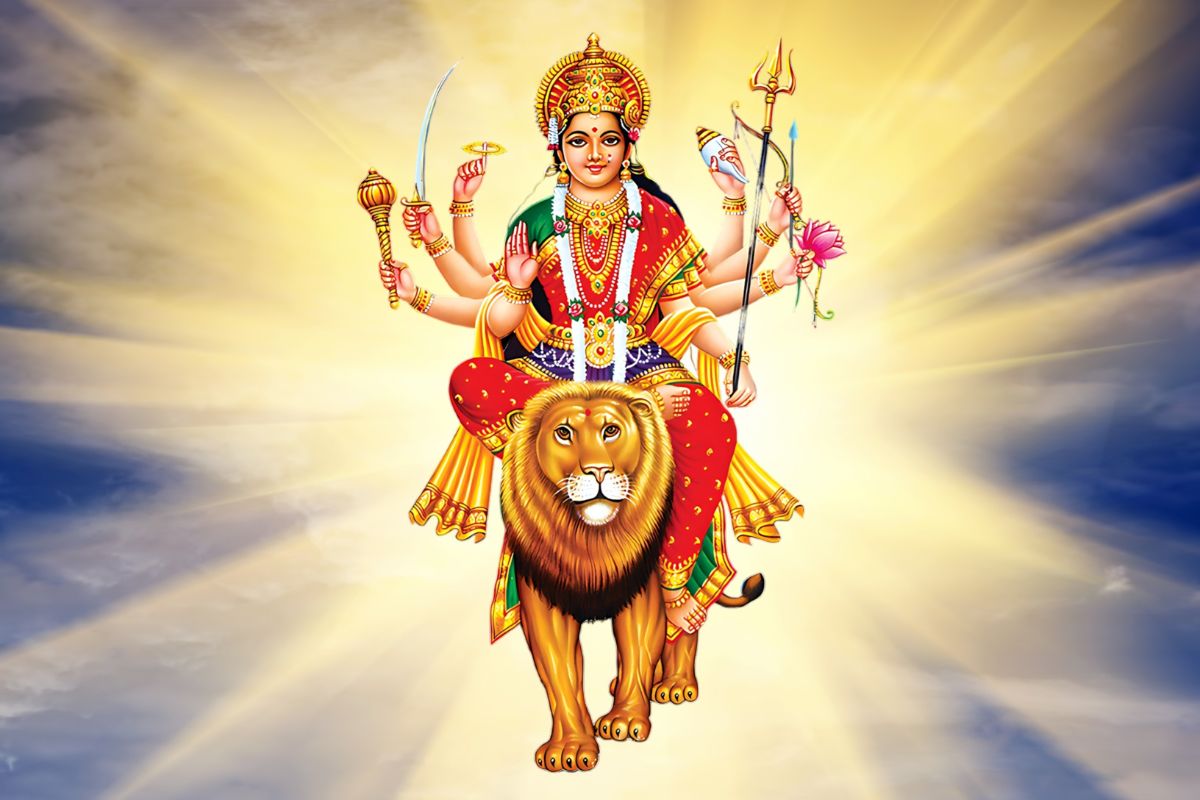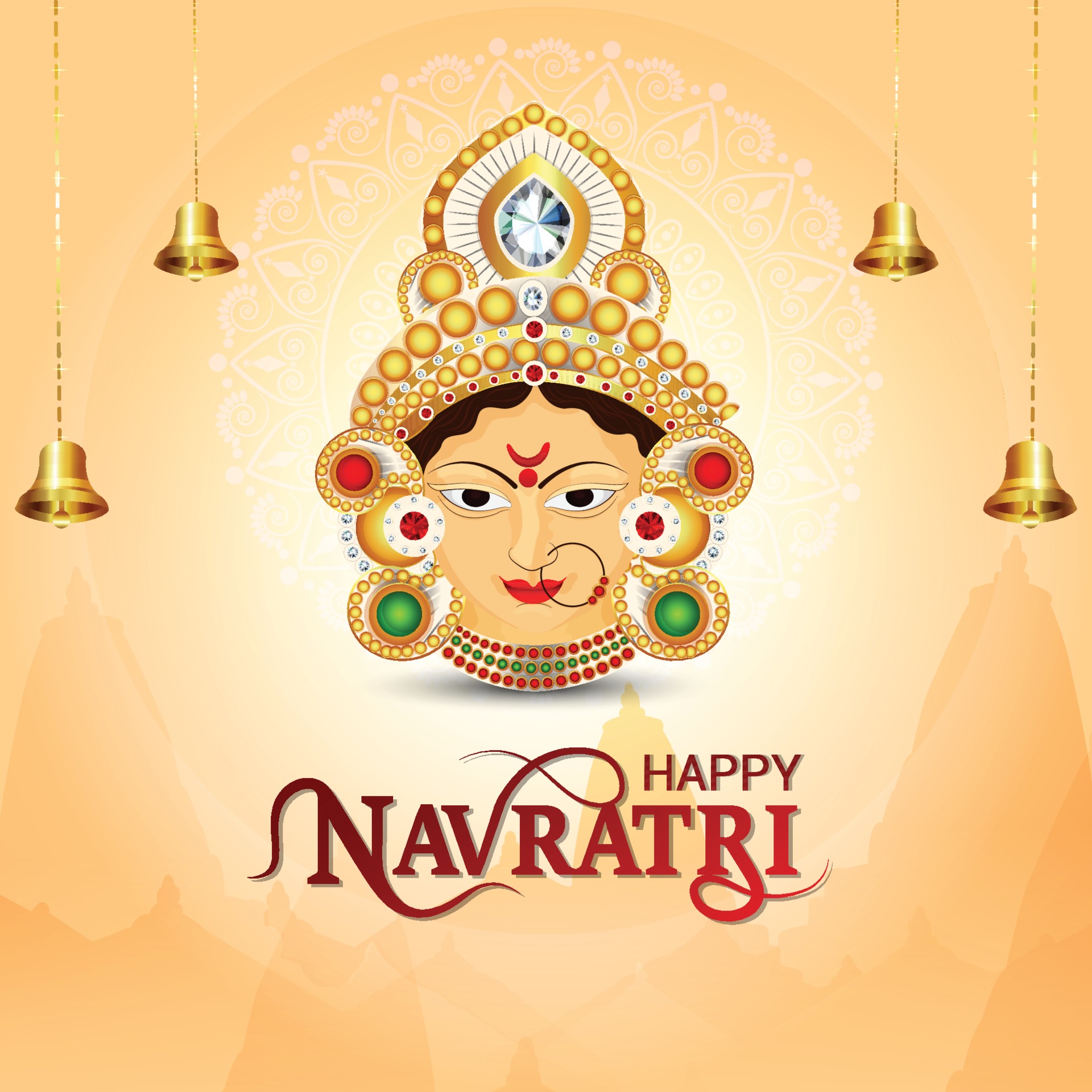| Posted on
Navratri, the nine-day festival that honors the divine feminine in Hinduism, is a deeply significant celebration in India and among Hindu communities around the world. At the heart of this festival is the worship of Maa Durga, the mother goddess who embodies strength, protection, and the triumph of good over evil.
During the Navratri festivities in 2024, devotees will celebrate nine distinct forms of the mother goddess, each with their own unique attributes and significance. Let's explore these nine divine manifestations of Maa Durga:
1. Shailaputri: Also known as Parvati or Hemavati, this is the first form of the goddess worshipped on the first day of Navratri. She is depicted sitting on a bull, holding a trident and lotus flower, symbolizing her role as the daughter of the Himalayas and consort of Lord Shiva.
2. Brahmacharini: On the second day, devotees honor this form of the goddess, who represents spiritual enlightenment, austerity, and devotion. She is depicted holding a rosary and water pot, symbolizing her focus on meditation and the attainment of moksha.
3. Chandraghanta: The third day of Navratri pays homage to this form of the goddess, who has a crescent moon on her forehead. She is seen riding a tiger and holding weapons, signifying her role as a fierce protector and vanquisher of evil.
4. Kushmanda: On the fourth day, Maa Durga is worshipped in her form as the creator of the universe. She is depicted with eight arms, holding various divine objects, and is said to have the power to dispel darkness and bring forth the sun.
5. Skanda Mata: The fifth day of Navratri is dedicated to this aspect of the goddess, who is the mother of Kartikeya, the commander-in-chief of the divine forces. She is shown seated on a lotus, holding her son in her lap, symbolizing her role as a nurturing and protective mother.
6. Katyayani: On the sixth day, devotees honor this fierce form of Maa Durga, who is believed to have been born to the sage Katyayana. She is depicted riding a lion, holding various weapons, and is known for her unwavering courage and determination in vanquishing evil.
7. Kalratri: The seventh day of Navratri is dedicated to this terrifying manifestation of the goddess, who is depicted with a dark complexion, wild hair, and wielding a sword and trident. She is associated with the destruction of demonic forces and the protection of her devotees.
8. Mahagauri: On the eighth day, devotees worship this serene and beautiful form of the goddess, who is believed to represent purity, peace, and enlightenment. She is depicted with a fair complexion, holding a trident and lotus flower, and is often associated with the removal of all impurities and the attainment of spiritual perfection.
9. Siddhidatri: The ninth and final day of Navratri is dedicated to this form of the goddess, who is believed to bestow upon her devotees all eight siddhis, or supernatural powers. She is depicted sitting on a lotus, holding a book, and is revered for her ability to grant boons and fulfill the deepest desires of her worshippers.
Throughout the Navratri festivities, devotees engage in various rituals, puja ceremonies, and cultural performances to honor these nine manifestations of Maa Durga. By celebrating the divine feminine in all her forms, Hindus seek to invoke the goddess's blessings, protection, and guidance in their lives.

Also Read:- Why navratri is celebrated?
0
0 Comment
| Posted on
The festival of Navratri is a Hindu festival that occurs over nine days and is dedicated to divine feminine energy, particularly the goddess Durga. Every night of Navratri represents a different aspect or attribute of Maa Durga. In 2024’s Navratri, devotees throughout the world worship these nine forms with great fervor praying for blessings, strength and protection.
Shailaputri, the daughter of the Mountains Himalayas representing steadfastness and authority is worshipped on the first day. She rides a bull as she holds her trident aloft. The second night is devoted to Brahmacharini who stands for asceticism and penance. Her devotion and self-control are symbolized by a rosary in one hand while she carries a water canister in another. The third form is Chandraghanta who stands for bravery; she has half-moon on her forehead and ten hands carrying various weapons.
Kushmanda is worshipped on the fourth day as it signifies creative energy in cosmos. Eight hands holding different weapons are used to portray her while riding a lion. On the fifth day, Skandamata becomes an object of maternal love as well as compassion; she holds Kartikeya in one arm while riding on top of lion herself.
Katyayani is dedicated to (the sixth night) courage and victory. She is portrayed riding a lion with four hands which hold a sword, lotus and shield. On the seventh night Kalaratri, the fierce form of Durga, is worshipped.
She has a dark complexion, disordered hair and wields a sword and a noose.
Mahagauri or the eighth manifestation of Durga is also worshipped on the eighth evening symbolizing purity and peacefulness; she rides a bull while holding a trident and drum in her hands – she looks like this. Siddhidatri, known as the bestower of wishes and superpowers all over Navratri’s ninth day; On siddhidharta’s lap resting on Lotus four handed women is found holding gada,lotus,chakra which we know as discus , sankha which we know as conch shell etc
Devotees keep fasts, pray or engage themselves in various cultural activities such as Garba and Dandiya Raas during Navratri that celebrate triumph of good over bad. These nine forms of Maa Durga that are worshipped during Navratri 2024 embody womanhood, strength, power that can be obtained from God are spiritual guidance towards attaining enlightenment.

0
0 Comment
